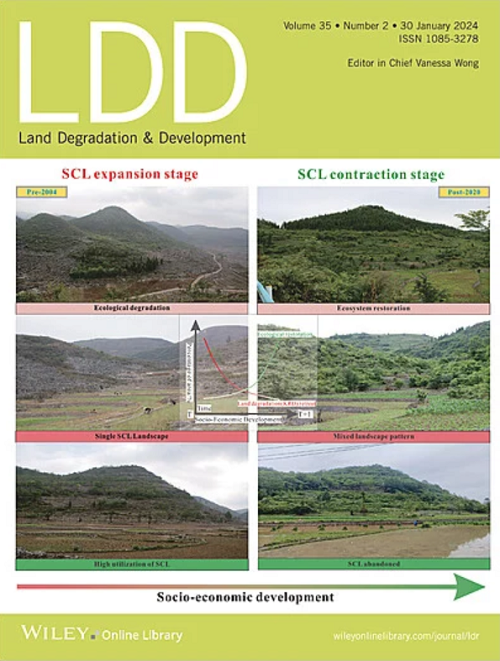Enhancing Climate Resilience and Sustainable Land Management Through Regulatory Innovations in the Circular Economy
IF 3.6
2区 农林科学
Q2 ENVIRONMENTAL SCIENCES
引用次数: 0
Abstract
The escalating challenges of climate change, land degradation, biodiversity loss, and resource depletion highlight the urgent need for sustainable environmental strategies. The circular economy presents a vital approach to enhancing climate resilience and sustainable land management by minimizing waste, optimizing resource efficiency, and promoting ecosystem restoration. Effective regulatory innovations play a crucial role in facilitating this transition, ensuring policies support circularity, ecological sustainability, and the rehabilitation of degraded ecosystems. This study adopts a comprehensive framework incorporating the fuzzy Analytical Hierarchy Process (AHP) method to assess and rank factors and sub‐factors essential for regulatory enhancement. Through fuzzy AHP analysis, six key factors and 24 sub‐factors influencing the circular economy were assessed. The findings reveal that economic incentives (R2), the legislative framework (R1), and innovation support (R4) are the most critical factors driving circular economy progress. Additionally, taxation strategies (R21), policy orientation (R11), and legal transparency (R12) emerged as the top‐ranked sub‐factors. By examining climate change as a key driver of land degradation, this study offers valuable insights into regulatory strategies that bolster climate resilience, support sustainable land management, and facilitate the transition toward a circular economy. The findings provide a policy‐oriented framework for enhancing regulatory structures aimed at mitigating environmental degradation and fostering long‐term sustainability.通过循环经济监管创新增强气候适应能力和可持续土地管理
气候变化、土地退化、生物多样性丧失和资源枯竭等日益严峻的挑战凸显了对可持续环境战略的迫切需要。循环经济是通过减少浪费、优化资源效率和促进生态系统恢复来增强气候适应能力和可持续土地管理的重要途径。有效的监管创新在促进这一转变、确保政策支持循环、生态可持续性和退化生态系统的恢复方面发挥着至关重要的作用。本研究采用模糊层次分析法(AHP)作为综合框架,对加强监管所必需的因子和子因子进行评估和排序。通过模糊层次分析法,对影响循环经济的6个关键因素和24个子因素进行了评价。研究结果表明,经济激励(R2)、立法框架(R1)和创新支持(R4)是推动循环经济发展的最关键因素。此外,税收策略(R21)、政策导向(R11)和法律透明度(R12)成为排名靠前的子因素。通过研究气候变化是土地退化的关键驱动因素,本研究为加强气候适应能力、支持可持续土地管理和促进向循环经济过渡的监管策略提供了有价值的见解。研究结果为加强旨在减轻环境退化和促进长期可持续性的监管结构提供了一个政策导向的框架。
本文章由计算机程序翻译,如有差异,请以英文原文为准。
求助全文
约1分钟内获得全文
求助全文
来源期刊

Land Degradation & Development
农林科学-环境科学
CiteScore
7.70
自引率
8.50%
发文量
379
审稿时长
5.5 months
期刊介绍:
Land Degradation & Development is an international journal which seeks to promote rational study of the recognition, monitoring, control and rehabilitation of degradation in terrestrial environments. The journal focuses on:
- what land degradation is;
- what causes land degradation;
- the impacts of land degradation
- the scale of land degradation;
- the history, current status or future trends of land degradation;
- avoidance, mitigation and control of land degradation;
- remedial actions to rehabilitate or restore degraded land;
- sustainable land management.
 求助内容:
求助内容: 应助结果提醒方式:
应助结果提醒方式:


